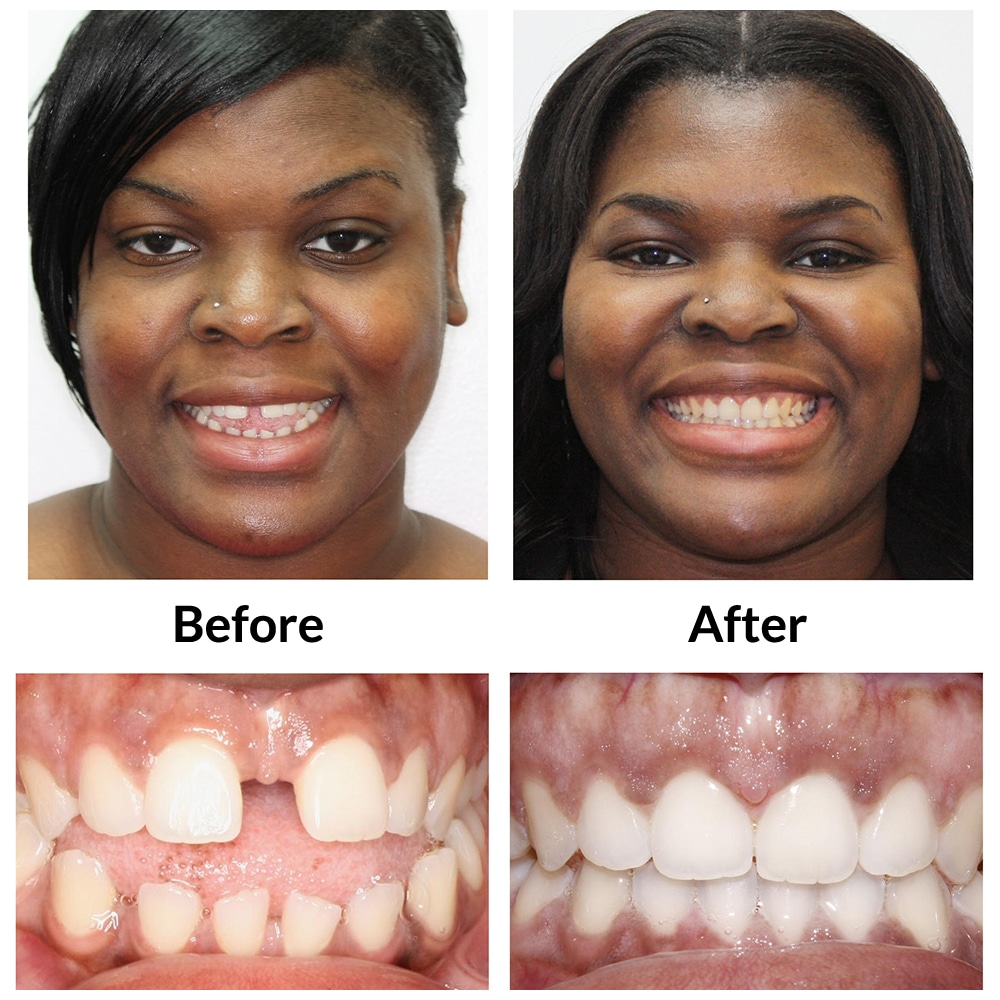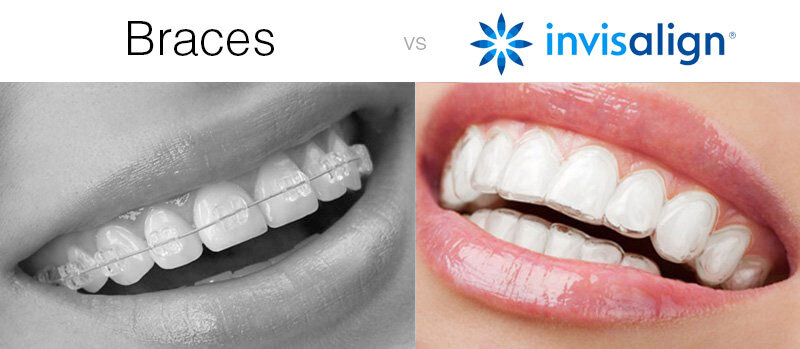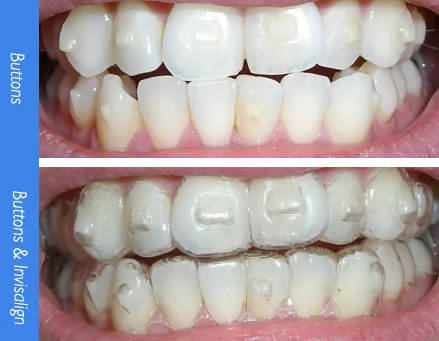How Invisalign Functions: Your Guide to Clear Aligners and Their Effectiveness
How Invisalign Functions: Your Guide to Clear Aligners and Their Effectiveness
Blog Article
Invisalign vs. Typical Braces: Which Choice Is Right for You?
When thinking about orthodontic therapy, the choice between Invisalign and traditional dental braces presents numerous vital elements that merit cautious assessment. Invisalign offers a discreet option with removable aligners, while typical dental braces offer a more noticeable yet reliable remedy for severe misalignment. Each choice includes unique benefits and disadvantages associated to looks, convenience, therapy duration, and price. Understanding these nuances is vital for making a notified choice that straightens with your individual preferences and way of life. The concern stays: which choice will ideal satisfy your orthodontic requirements and assumptions?
Review of Therapy Choices

On the other hand, typical dental braces contain metal brackets and cables that are bonded to the teeth. This technique uses constant stress gradually to achieve placement. While effective for complex orthodontic concerns, standard braces need regular check outs for changes and can posture challenges in preserving dental hygiene as a result of the difficulty of cleaning up about cords and braces.
Both options have their advantages, and the choice often depends upon specific dental problems, way of life preferences, and person compliance. Inevitably, speaking with an orthodontic specialist is essential for establishing the most appropriate therapy strategy customized to individual demands. Recognizing the subtleties of each alternative can substantially influence the overall success of orthodontic therapy.
Visual Factors To Consider
A considerable variable influencing the choice in between Invisalign and typical dental braces is the aesthetic allure each treatment uses. Invisalign aligners are crafted from clear plastic, making them practically unnoticeable when put on.
In comparison, standard dental braces contain steel brackets and cords, which can be much more recognizable. While developments in orthodontic innovation have actually caused the development of smaller sized brackets and colored elastics, traditional braces still maintain a more obvious profile. For some individuals, the visibility of braces might prevent them from seeking essential treatment.
Eventually, the selection in between Invisalign and traditional dental braces may rest on personal preferences relating to looks. People who focus on discernment usually favor Invisalign, while those that are less concerned regarding presence may go with traditional dental braces. Recognizing the aesthetic ramifications of each choice is crucial for making an informed decision that aligns with one's way of life and preferences.
Convenience and Convenience

In terms of ease, Invisalign aligners are detachable, allowing clients to appreciate their favored foods without constraint and keep ideal dental health. Cleaning and flossing are streamlined, as the aligners can be secured during these regimens, whereas conventional braces require mindful steering around brackets and cords.
In addition, Invisalign's modern system permits less orthodontic visits. Patients usually receive several collections of aligners at the same time, which can simplify the treatment process and reduce time invested in the orthodontist's chair. In contrast, standard braces necessitate normal adjustments, making them much less practical for those with hectic schedules. Invisalign. Overall, the comfort and convenience of Invisalign make it an look at these guys attractive choice for many individuals seeking orthodontic therapy.
Therapy Period and Effectiveness
While both Invisalign and standard dental braces are effective in dealing with dental imbalances, the duration of treatment can differ considerably between both choices. Commonly, Invisalign therapy can take anywhere from 12 to 18 months, depending on the intricacy of the case. The clear aligners function by slowly changing teeth right into their wanted settings, and normal follow-ups with an orthodontist aid ensure development remains on the right track.
In contrast, conventional braces frequently require a longer commitment, normally varying visit this page from 18 months to 3 years. This is because of their set nature and making use of wires and braces, which can be extra efficient for complex instances and serious misalignments (Invisalign). The therapy effectiveness of standard braces is well-documented, as they allow for accurate adjustments and greater control over tooth movement
Inevitably, the selection between Invisalign and typical braces might depend upon both the expected therapy duration and the specific dental concerns at hand. Consulting with an orthodontist is crucial, as they can provide tailored referrals based upon individual needs, making sure the selected method aligns with desired results and durations.
Price Comparison and Insurance Coverage Choices
Expense plays a considerable function in the decision-making process for individuals thinking about orthodontic treatment, whether going with Invisalign or conventional braces. Generally, the expense of Invisalign varieties from $3,000 to $8,000, while typical braces normally set you back between $2,000 and $6,000. Variables influencing these expenses include the intricacy of the case, the duration of treatment, and geographical location.
Insurance policy coverage can substantially impact out-of-pocket expenses. Several dental insurance coverage plans offer partial insurance coverage for orthodontic therapies, however the specifics can vary commonly. It is important for people to review their insurance plan to establish the extent of coverage for either option. Normally, traditional dental braces may be much more regularly covered by insurance plans contrasted to Invisalign, which some insurance providers categorize as an aesthetic treatment.
Additionally, several orthodontic methods offer versatile repayment strategies, making both therapy choices a lot more obtainable. Patients should ask about potential financing options and discounts for upfront payments. Evaluating the total price, consisting of insurance policy advantages and payment plans, is important for making an informed decision that straightens with both visual choices and budget plan considerations.

Conclusion
In recap, the selection in between Invisalign try these out and standard braces depends upon multiple factors, consisting of visual preferences, comfort, therapy period, and expense. Invisalign provides a discreet, detachable alternative that assists in dental health and nutritional versatility, while traditional dental braces might be much more suitable for intricate oral issues and often come with a reduced rate point. Ultimately, appointment with an orthodontist is important to examine private circumstances and establish the most appropriate therapy option for attaining ideal dental positioning.
When considering orthodontic therapy, the option in between Invisalign and conventional dental braces provides several crucial factors that warrant careful analysis.Comparing Invisalign and standard braces discloses distinct therapy options for orthodontic modification.While both Invisalign and traditional braces are reliable in fixing oral misalignments, the duration of therapy can vary substantially between the two alternatives.Cost plays a considerable duty in the decision-making process for individuals taking into consideration orthodontic treatment, whether choosing for Invisalign or typical braces.In summary, the selection in between Invisalign and conventional dental braces pivots on multiple elements, consisting of visual preferences, comfort, treatment period, and price.
Report this page